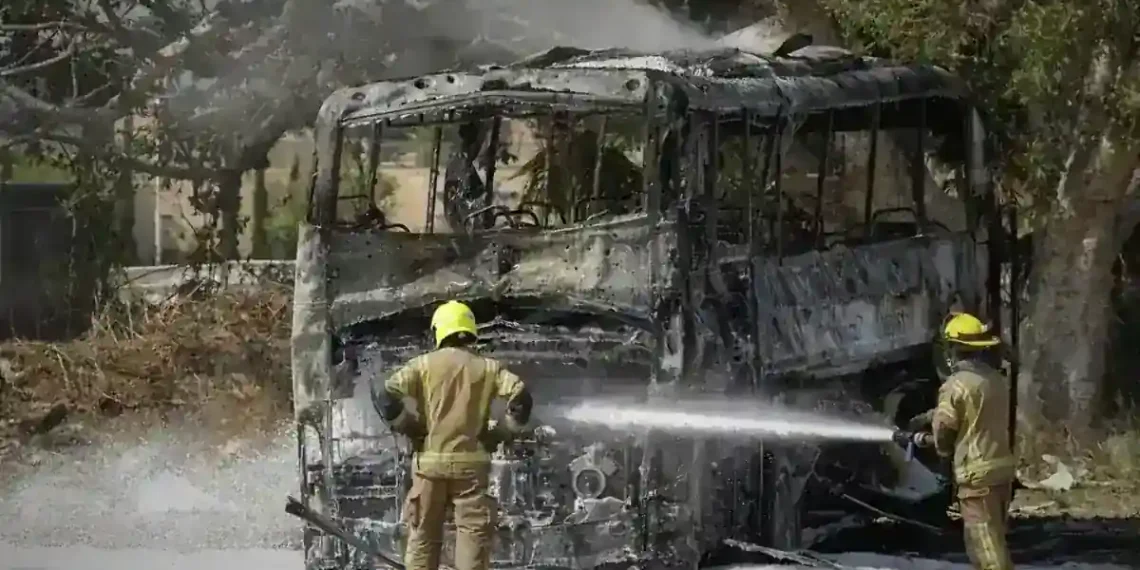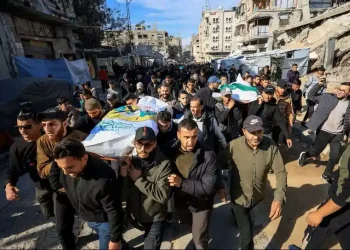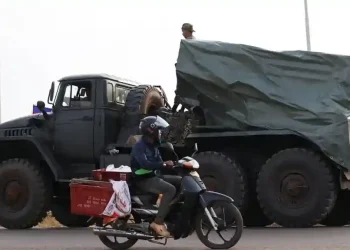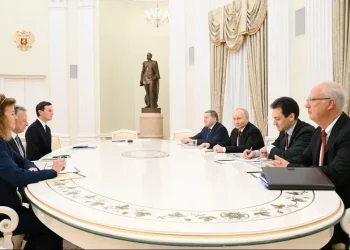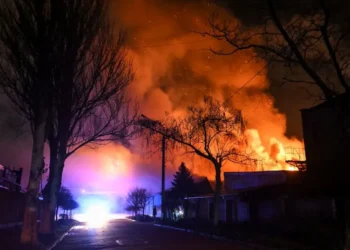Israel Pounds Iran’s Nuclear Sites as Tensions Soar — Trump Urges Tehran Evacuation and Warns of “Something Bigger Than a Ceasefire”
The conflict between Israel and Iran has escalated dramatically, with Israeli airstrikes entering their fifth day and striking deep into Iran’s military and nuclear infrastructure — including rare damage to the underground halls of its Natanz enrichment facility. The strikes have prompted urgent warnings from former U.S. President Donald Trump and sent residents of Tehran scrambling to evacuate the capital.
Israel Strikes Deep Into Iran’s Nuclear Program
For the first time, the United Nations nuclear watchdog confirmed that Israeli strikes had directly damaged underground centrifuge halls at Natanz — Iran’s most important uranium enrichment site. While above-ground buildings had been hit in the past, this marks a serious escalation.
Natanz, located about 220 km southeast of Tehran, houses over 10,000 centrifuges used to enrich uranium. Although Iran insists its nuclear program is peaceful, Israel views it as a threat and has launched a sweeping campaign to cripple Iran’s capabilities.
Since the beginning of the operation, Israel has reportedly targeted military leaders, nuclear scientists, and key infrastructure, killing at least 224 people inside Iran. In response, Iran has fired over 370 missiles and launched hundreds of drones at Israel, killing 24 people so far.
IAEA Confirms Rare Underground Damage
The International Atomic Energy Agency (IAEA) said high-resolution satellite imagery showed that underground enrichment halls at Natanz suffered direct impacts from Israeli strikes — a rare and serious development.
“Based on continued analysis… the IAEA has identified direct impacts on the underground enrichment halls at Natanz,” the agency said Tuesday. The underground portion houses the majority of Iran’s uranium enrichment activities.
While Israel claims these strikes have set Iran’s nuclear program back “a very, very long time,” some key targets — like the ultra-fortified Fordo facility — remain out of reach.
Chaos in Tehran as Evacuation Urged
As the conflict escalates, Tehran is showing signs of panic. Trump took to social media Tuesday to urge “everyone to immediately evacuate Tehran.” This echoed earlier warnings from the Israeli military, which asked over 300,000 residents in a central district of the city to leave.
By Tuesday morning, traffic jammed the roads out of Tehran, shops were shuttered, and long lines formed at gas stations. Even the historic Grand Bazaar — a symbol of everyday life — closed its doors, a move typically reserved for national crises.
Placards demanding “severe retaliation” against Israel popped up across the capital, and Iran’s health ministry cancelled all staff leave in preparation for mass casualties — though officials insisted the situation was “under control.”
Israel Claims Aerial Superiority and High-Profile Kill
Israel’s military says it now holds “full aerial superiority over Tehran’s skies” and claimed responsibility for killing a top Iranian general, Ali Shadmani, in a precision strike. Iran has not confirmed his death but has named replacements for several senior military leaders killed in recent days.
Israeli fighter jets also destroyed two Iranian F-14 jets and over 120 missile launchers, including some just moments before they fired on Israel. In total, the military says it hit 10 Quds Force command centers and issued evacuation warnings for areas housing Iranian state TV, police headquarters, and major hospitals.
Trump: “Not in the Mood to Negotiate”
Trump left the G7 summit in Canada a day early to focus on the conflict. Speaking aboard Air Force One, he dismissed talk of a ceasefire.
“I’m not looking at a ceasefire. We’re looking at something better than a ceasefire,” he said, adding that he wants a “real end” to Iran’s military ambitions and nuclear activity. He also left open the possibility of sending Vice President JD Vance and envoy Steve Witkoff to negotiate — depending on developments.
His comments clashed with French President Emmanuel Macron, who had floated ceasefire efforts. Trump shot back online, claiming Macron had “no idea” why he was returning to Washington and that what’s coming is “much bigger than a ceasefire.”
What Comes Next?
As Israel continues its campaign and Iran weighs its next response, the situation remains fluid and highly volatile. With both sides exchanging deadly strikes and no diplomatic breakthrough in sight, the region teeters on the edge of a much broader war — one that could redefine not just the Middle East, but global geopolitics.
Stay tuned as we track developments in real-time.
This article was rewritten by JournosNews.com based on verified reporting from trusted sources. The content has been independently reviewed, fact-checked, and edited for accuracy, neutrality, tone, and global readability in accordance with Google News and AdSense standards.
All opinions, quotes, or statements from contributors, experts, or sourced organizations do not necessarily reflect the views of JournosNews.com. JournosNews.com maintains full editorial independence from any external funders, sponsors, or organizations.
Stay informed with JournosNews.com — your trusted source for verified global reporting and in-depth analysis. Follow us on Google News, BlueSky, and X for real-time updates.
